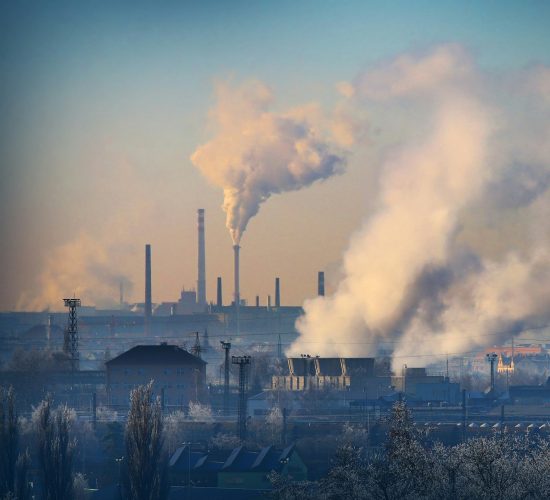Climate Crossroads: The Pandemic’s Dual Role in Climate Change

The COVID-19 pandemic significantly disrupted life worldwide, altering economies, societies, and the environment. Amid the chaos, it brought an unexpected twist to the climate change narrative. While the pandemic triggered a temporary reduction in carbon emissions, it also exposed systemic challenges and opportunities in the global fight against climate change.
A Temporary Pause in Carbon Emissions
As nations imposed lockdowns to curb the spread of the virus, industries came to a standstill, transportation networks halted, and air travel nearly ceased. Consequently, global carbon emissions dropped by an estimated 7% in 2020, the most significant decrease in recent history. For example, cities once shrouded in smog experienced blue skies, and air quality improved dramatically in regions like India and China.
Nevertheless, this decline was short-lived. As economies reopened, emissions rebounded, revealing the fragility of temporary reductions. This highlighted a critical lesson: addressing climate change requires systemic, long-term solutions, not momentary pauses. Moreover, while the pandemic reduced emissions temporarily, it also demonstrated the interconnectedness of global systems, urging policymakers to consider more sustainable recovery strategies.
Exposing Structural Weaknesses in Climate Policies
The pandemic unveiled the vulnerabilities in current climate policies. Governments worldwide struggled to balance economic recovery with environmental sustainability. For instance, several nations prioritized reviving fossil fuel-intensive industries to stimulate growth, undermining climate commitments under agreements like the Paris Accord.
Additionally, the pandemic underscored the disproportionate impact of climate change on vulnerable populations. Low-income communities, already burdened by environmental injustices, faced compounded challenges during the health crisis. This dual burden emphasized the urgent need for equitable climate policies addressing ecological and social disparities.
Shifting Consumer Behaviors and Environmental Awareness
Lockdowns altered daily routines, prompting a reevaluation of consumption patterns and lifestyle choices. Remote work became the norm, reducing commuting emissions and raising questions about the necessity of traditional office structures. Similarly, the surge in online shopping increased packaging waste, creating new environmental concerns.
Meanwhile, many individuals developed a deeper appreciation for nature during the pandemic. With travel restrictions in place, local parks and green spaces became refuges, fostering a renewed connection to the environment. This shift in perspective can inspire more sustainable habits and a collective push for greener policies.
Accelerating Innovation in Renewable Energy
The pandemic also spurred innovation in renewable energy sectors. As oil prices plummeted during lockdowns, renewable energy sources like solar and wind gained momentum, proving their resilience in volatile markets. Governments and businesses began investing in green technologies as part of economic recovery plans, recognizing the dual benefits of job creation and emissions reduction.
For instance, countries such as Germany and the United Kingdom increased subsidies for clean energy projects, aiming to rebuild their economies while meeting climate targets. This renewed focus on renewables underscores the potential for a pandemic-driven transition toward a more sustainable energy future.
The Risk of a Plastic Resurgence
While the pandemic accelerated some environmental advancements, it also brought setbacks, particularly in the fight against plastic pollution. The increased demand for personal protective equipment (PPE), disposable masks, and single-use plastics surged during the crisis. Hospitals and individuals prioritized safety, leading to a massive influx of plastic waste.
This surge highlighted the need for scalable solutions to manage waste sustainably. Without proactive measures, the pandemic’s legacy could include long-term environmental damage due to unchecked plastic pollution, emphasizing the importance of integrating waste management into broader climate strategies.
Lessons for a Resilient Future
The pandemic’s dual impact on climate change offers valuable insights for building a more resilient future. First, it underscores the importance of aligning economic recovery efforts with climate goals. Green recovery initiatives, such as investing in renewable energy and sustainable infrastructure, can drive growth while reducing emissions.
Second, the pandemic highlighted the power of collective action. Though imperfect, the global response to COVID-19 demonstrated humanity’s ability to mobilize resources and adapt rapidly. This sense of urgency and collaboration can serve as a blueprint for addressing climate challenges.
Moving Forward: A Call for Bold Action
The COVID-19 pandemic acted as a stress test and an opportunity for climate action. It revealed the interconnected nature of our world and the urgent need for systemic change. By learning from this unprecedented moment, governments, businesses, and individuals can chart a path toward a more sustainable and equitable future.
Now is the time to act boldly, leveraging the lessons of the pandemic to tackle the climate crisis head-on. With collective determination, the crossroads of the pandemic and climate change can lead to a transformative journey for the planet.
Additional Information
- Blogs
- climate change, climate crisis, renewable energy sources
- David Hastings